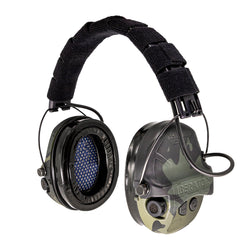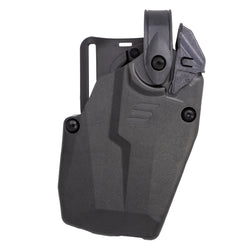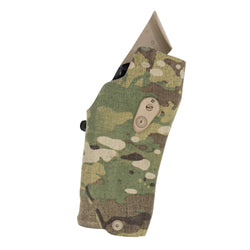Going off-grid can be a great way to experience more secluded areas—if it’s done the right way. The goal of off-grid preparedness is to help you understand the options and tools that make trips safer and more enjoyable. This article tackles the topic of recovery gear: what to bring and why being prepared matters.
What is Recovery Gear?
Recovery gear is a set of specialized tools designed to help free a vehicle that’s stuck in mud, sand, snow, or other challenging terrain.
All vehicles come with a certain amount of basic recovery gear—things to fix a flat tire or change a bulb. That’s all well and good for when you’re on the highway. But when you’re off-grid or in the deep backcountry, you’re going to want more than just the basics, even if it’s just a short trip. For me, recovery gear comes in three levels: low, medium, and hardcore, each building on the last.
A common belief for my family, and other like-minded folks, is that the bare minimum isn’t enough. You can never be sure what you’re going to encounter in the great outdoors, so you should take the necessary precautions to keep yourself and anyone with you safe.

The level of gear you need will be determined by a few factors, such as terrain, weather, and functionality of your rig. Knowing the capability of your vehicle and your gear can help you determine if a road’s terrain would be a good or a bad idea. Add to the equation any weather the area has experienced (think rain, snow, etc.), and you can start to fill out the big picture for a trip.
The idea is to be able to self-rescue, meaning to be able to take care of whatever happens with the gear you have with you. A little forethought and research can go a long way with off-grid adventures.
WHY SELF-RESCUE Matters
Having the correct gear and being prepared for potential issues can and will make a huge difference off-grid. If you go into the wilds with at least the bare minimum for success, you’ll have a good time and be covered in the event that an issue arises.
Storytime: A few years ago, my husband decided to take a trip into the backcountry after watching videos of a serene alpine lake from an off-road group. He knew our rig’s capabilities, researched maps, looked at the terrain, watched weather patterns — everything he should have done ahead of the trip.
Deciding a certain weekend looked perfect, he and my son set off, thinking that if someone else could take their $100k SUV up the road, our rig and off-road trailer would have no problem.
On the road, they encountered a lot of blown-down trees from previous years’ fires and some pretty gnarly scree fields to cross, things that weren’t shown in the videos. Living in the mountain west, scree fields and trees are a pretty known thing for us, but this road was something else.
What had appeared in videos as an easy Jeep trail turned into a tight track with trees, shrubs, and rocks impeding the road.

Then disaster struck. A tree, hidden by a shrub on the side of the road, hooked the fender and pulled it up and away from the body of the trailer. After investigating, he decided it was best to back down the track to a wide corner and turn around. That went fine, but at the bottom of the hill, still very deep in the back country, he discovered what really happened.
Not only had both of the fenders been pulled up on the trailer, but there was a large gash in one of the tires. He was able to use the spare tire off the truck for the trailer (we ordered the trailer with matching lug patterns for this reason).
Thankfully, he had all the tools necessary to be able to fix the flat tire, reattach the fenders as best he could, and still enjoy the weekend in the backcountry.
Essential Recovery Gear for Every Level
So, what should you take with you when you go off-grid? Recovery gear needs vary based on your experience and the terrain. Well-traveled forest roads might not require heavy-duty tools, while remote, less-traversed areas will require more. Additionally, I do not advocate for using techniques or gear that you have no experience with.
Low-Level Gear
The low level is the basic kit of gear that everyone should take with them when they go off-grid, regardless. Beyond what comes standard with most vehicles, include:
- Spare tire or flat-fixes along with a breaker bar and corresponding sockets for the tire
- Air compressor or inflator
- Jumper cables
- Shovel for digging out if necessary
- Small tool kit with screwdrivers, wrenches, and basic repair tools.

Medium-Level Gear
The next level up is the Medium level, which builds on the low-level kit for rougher terrain.
- Hammer or sledgehammer
- Extended tool kit including wrenches, sockets, and electrical components
- High-lift jack
- Traction boards
Hard-core Gear
The last level is what I call the hard-core gear. This is the true recovery gear for serious situations when things have gone very wrong. These items require specialized training and experience and should only be used by those who have it.
- Winches with kinetic ropes
- Snatch blocks
- Shackles
Using these items without training to add to your woes and is not recommended.

Final Takeaways
Along with carrying all levels of recovery gear, having a working knowledge of your vehicle and its components is essential. Gear alone won’t help if you don’t know how to use it.
The bottom line: be prepared, understand your own and your vehicle’s limits, know your tools, and familiarize yourself with the area before heading off-grid.











